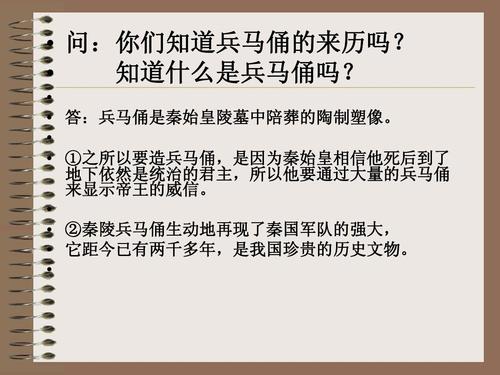
What Does the Terracotta Army Tell You About Shi Huangdi?
The Terracotta Army is one of the most iconic and awe-inspiring archaeological discoveries of all time. This vast collection of life-sized terracotta sculptures, each unique in its features and attire, stands as a testament to the ambition, power, and paranoia of Qin Shi Huangdi, the first emperor of China.
Belief in the Afterlife
Perhaps the most striking message conveyed by the Terracotta Army is Shi Huangdi's belief in the afterlife and his desire to rule even after death. The very existence of this vast necropolis, complete with an army, chariots, weapons, and other provisions, indicates that Shi Huangdi subscribed to the idea of a life beyond death, one that mirrored the earthly realm. He believed that he would need an army to protect him and maintain his power in the afterlife, just as he did in the land of the living.
Military Might and Ambition
The sheer scale of the Terracotta Army speaks volumes about Shi Huangdi's military ambitions. The army, estimated to contain over 8,000 soldiers, 130 chariots with 520 horses, and 150 cavalry horses, represents a formidable force, even in the afterlife. This massive display of military power is a testament to Shi Huangdi's desire to conquer and control, a desire that extended beyond the boundaries of the mortal world. The presence of chariots and cavalry, essential elements of warfare during the Qin dynasty, underscores the importance placed on military prowess.
Obsession with Immortality
Beyond military protection, the Terracotta Army also hints at Shi Huangdi's deep-seated obsession with immortality. The emperor was known to have actively sought the elixir of life, dispatching expeditions to find mythical islands believed to hold the secret to eternal life. The construction of such an elaborate and lifelike army could be interpreted as a way for Shi Huangdi to cheat death, to create a lasting legacy that would endure for eternity.
Attention to Detail and Craftsmanship
The meticulous detail and craftsmanship evident in each terracotta figure reveal a ruler who demanded perfection. Each soldier boasts unique facial features, hairstyles, armor, and weaponry, suggesting individual sculpting and a high level of artistic skill. The horses are equally lifelike, their musculature and expressions carefully rendered. Such attention to detail suggests that Shi Huangdi was not content with a mere symbolic army; he desired a force that was as realistic and imposing as possible, reflecting the might and majesty of his earthly reign.
Centralized Power and Control
The construction of such a monumental project as the Terracotta Army would have required immense resources, manpower, and centralized control. This undertaking underscores the absolute power Shi Huangdi wielded over his empire. The ability to mobilize such resources for a project solely dedicated to his afterlife speaks to the centralized nature of his rule and the unquestioned obedience he commanded.
Questions to Consider:
- How does the Terracotta Army challenge our understanding of ancient Chinese beliefs about the afterlife?
- What do the variations in the terracotta soldiers' attire and features suggest about the Qin army's composition?
- Beyond its religious and symbolic significance, what does the Terracotta Army reveal about the social and economic conditions of the Qin dynasty?